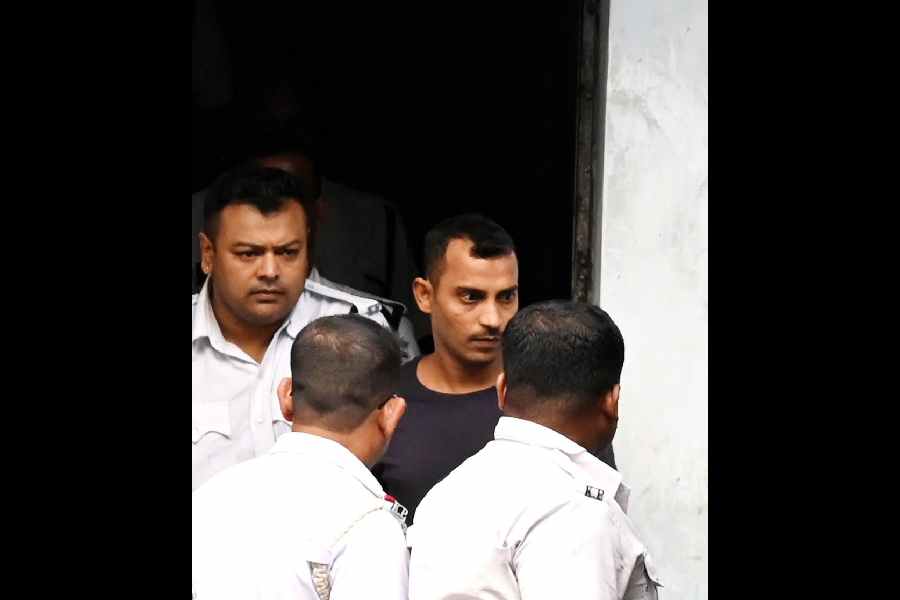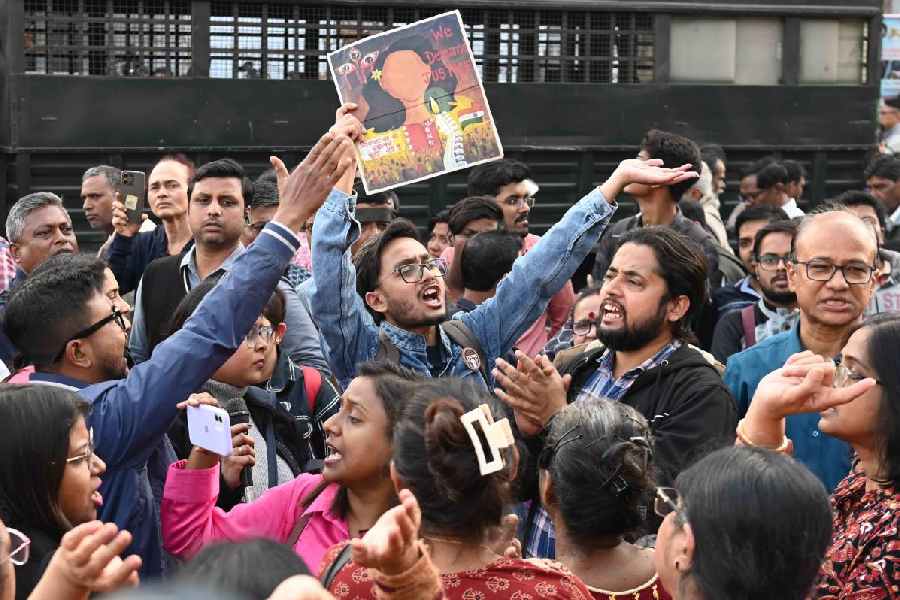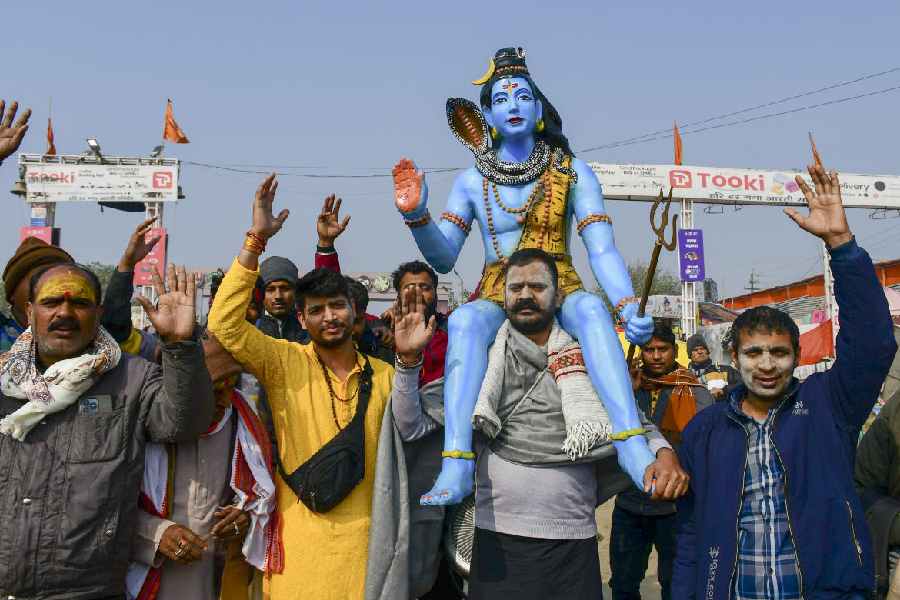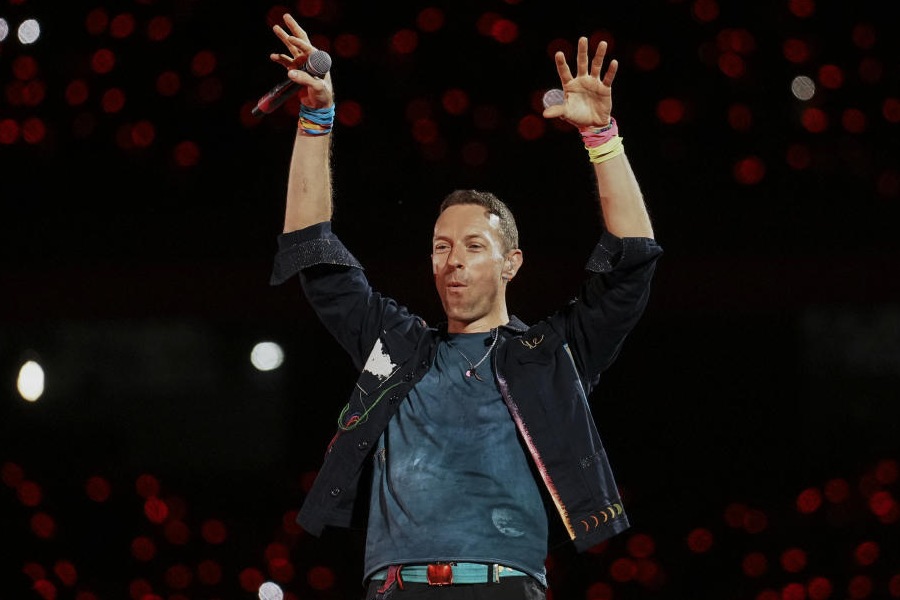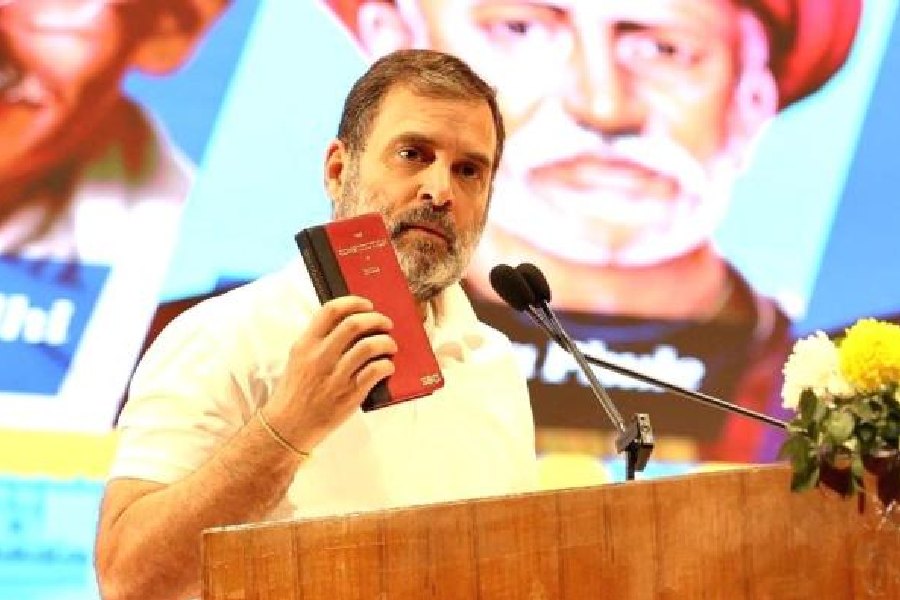India’s space agency on Tuesday revealed the four astronauts-designate who are training for the country’s first human spaceflight mission planned for 2025.
Prime Minister Narendra Modi presented “wings” to the four astronauts-designate — all test pilots with the Indian Air Force — at a function at the Vikram Sarabhai Space Centre in Thiruvananthapuram. The wings are badges worn on the chest.
The four pilots are Group Captain Prasanth Balakrishnan Nair, Group Captain Ajit Krishnan, Group Captain Angad Pratap and Wing Commander Shubhanshu Shukla.
They had spent a year at the Yuri Gagarin Cosmonaut Training Centre in Moscow during 2020-21 pursuing studies on parabolic flights, orbital mechanics, astro-navigation and survival training in snow, water and steppes before returning to Bangalore. They have since then been training at facilities of the Indian Space Research Organisation (Isro).
Isro’s Gaganyaan project seeks to demonstrate human spaceflight capability by using a homegrown rocket and space capsule to ferry three astronauts into an orbit 400km above the Earth for three days and bring them safely back with a splashdown in the sea.
Modi, who had on August 15, 2018, urged Isro to prepare for a human spaceflight mission for which his government later sanctioned Rs 10,000 crore, speaking at VSSC on Tuesday described the astronauts-designate as “four powers”.
“They are not just four names or four human beings. They are four powers who would carry the aspirations of 140 crore to space,” Modi told the gathering of Isro scientists.
Kerala chief minister Pinarayi Vijayan and governor Arif Mohammed Khan, among others, were also present.
“Indians will be going back to space after 40 years. But this time, the time is ours, the countdown is ours, and the rocket is also ours,” Modi said, alluding to the Gaganyaan mission.
The four test pilots are all alumni of the National Defence Academy who were commissioned into the IAF’s fighter stream and have flying experience ranging from 2,000 to 3,000 hours.
“Fighter test pilots are ideal candidates for astronauts because, among other factors, they have the skills and experience in flying new or experimental aircraft,” said a specialist familiar with the aerospace and defence sectors.
The IAF’s Wing Commander (then Squadron Leader) Rakesh Sharma was the first Indian to fly into space aboard a Soyuz-T11 spacecraft in 1984. Air Commodore (then Wing Commander) Ravish Malhotra had also trained for spaceflight but he never got to travel.
The Soviet Union was the first country to send an astronaut into the Earth orbit followed by the US. Since then China has also carried out human spaceflight missions. The European Space Agency and Japan had initiated activities for their human spaceflight missions in the 1990s but later abandoned them in favour of sending astronauts to the International Space Station.
Isro has been preparing for human spaceflight for over 15 years through the development of key technologies, including a rocket for heavy payloads, a space capsule and operational systems for safe atmospheric re-entry of the crew module and a crew escape system.
In October 2023, Isro had successfully conducted an in-flight abort demonstration and recovery from the sea of an empty crew module to test a crew escape system designed to allow astronauts to escape safely in the event of an emergency at launch.
The crew escape system test was part of a series of at least 20 major tests, including three uncrewed missions, of the launch vehicle and demonstration flights of the crew escape system ahead of the first human spaceflight mission planned for 2025.
As soon as the name of Prasanth Nair was announced at the event, his neighbours at Nenmara in Palakkad district gathered outside his modest house. While his parents Balakrishnan and Prameela were not around, the neighbours told reporters that they had no idea their tiny village would be catapulted into such fame.
According to them, Nair was partly schooled in Palakkad and Kuwait before he returned to his hometown where he did his engineering from NSS College of Engineering before joining the Air Force through National Defence Academy.
Isro did not reveal any personal data about the astronauts-designate.


